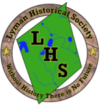We have been working hard researching the people, events, and places that built our town. Many Lyman people have made significant contributions to our country.
- Horace Cousens was born in Lyman and became a successful Boston businessman. He provided funds for the building of the Cousens School.
- Bobby Coombs was born in Lyman. and became a Major League pitcher and college coach. He is a member of the Maine Baseball Hall of Fame.
- Theodore Lyman, our town’s namesake, wanted our town’s name changed from Coxhall and offered a barrel of rum and a bell in exchange for the name change! His son was the one who actually delivered on his father’s promise on the bell.
- Nathaniel M. Low was part of the Murphy family, an original family in Lyman. When he went to Boston, he changed his name to Low because of the racism towards the Irish at that time. He manufactured the first hygrometer, which measures relative humidity. Edsen (not from Lyman) invented it. We have the actual prototype in our archives!
- Simeon Chadbourne was an early settler of Lyman and fought in the Battle of Bunker Hill. A cemetery is named for him.
Some of the research we’ve done so far is compiles in notebooks on the Community Library. Please take a look.
We also have the beginnings of a children’s book describing historical facts along with ideas for activities. It’s target group is Grades 4+.
We’ve created many display boards with a great deal of researched history about these early settlers and new research is being conducted. We have materials safely stored until we can find a place of our own to set up a museum.
Lyman started as a logging and farming community, with the earliest mill belonging to James Lord on Lord’s Lane. Our Past Events page describes in detail the timber and shipbuilding industries in early Lyman.
Here is a summary of our town’s beginnings.
HISTORY OF LYMAN (FORMERLY COXHALL)
John Sanders, John Bush, and Peter Turbat in 1660 purchased of the Indian Fluellen, a tract of land roughly the present limits of the town. The proprietors sold their title in 1668 to Harlackindine Symonds, who conveyed his right to Roger Haskins and 35 others, and under the proprietorship of these the town was settled in 1767.
The earliest deeds showed that the land was to the north of Wells/Kennebunk were acquired first by a number of land speculators from Essex County, Massachusetts who gave the area the name Coxhall, probably after Coggeshall (pronounced Coxhall) in Essex, England. John Low, a principal proprietor, eventually moved his family to Coxhall. Samuel Emmons of Wells purchased land in Coxhall where his four sons would later settle beginning in the 1760s. Abigail Emmons, born 1763, daughter of Samuel and Elizabeth (Miller) Emmons, is credited with being the first white child born in the settlement.
By the American Revolution, the settlement was growing, especially near the Kennebunk River, an outlet of Kennebunk Pond. Saw mills were erected a the near the rivers, ponds, and streams were arable enough to attract farmers. One of the first sawmills was built by James Lord, and the structure still stands today, probably the oldest building in Lyman. Benjamin and Nathaniel Goodwin built a sawmill and grist mill in 1782, and the surrounding area became known as Goodwin’s Mills.
The town was incorporated under the name of Coxhall in 1778. A land dispute with Sanford delayed the official incorporation, and the first town meeting was held June 5, 1780 at the home of Alexander Grant. The name of the town was changed to Lyman in honor of Theodore Lyman of Boston (formerly of York and Kennebunk) on February 26, 1803.
SOURCE: EARLY FAMILIES OF LYMAN (Boyle), 2017.
How Lyman Got Its Name
This description was on the back of an 1874 map of Lyman.
“The following story is told of Mr. Lyman: As a trader he did considerable business with the inhabitants of Coxhall (as Lyman was then called). Mr. Lyman did not like the name, he made them, this proposition, that if they would give them a barrel of West India rum and a bell for the first church which had a tower. Many years after one was built, but it was long after Mr. Lyman’s death. Some of the old residents remembered the offer and a committee was appointed to go to Boston and interview his son. They saw him, explained the errand, and he gave them a check for $300 to procure the bell.”
